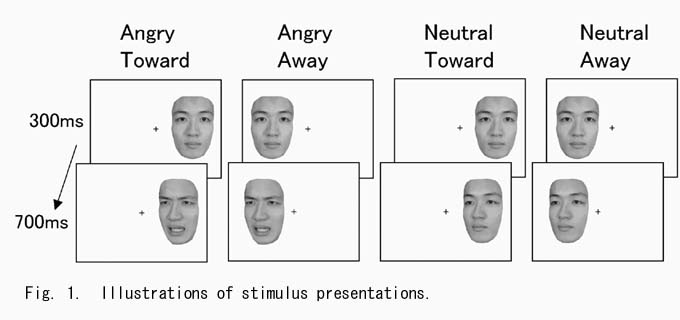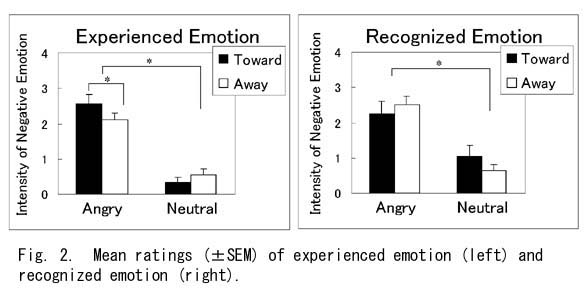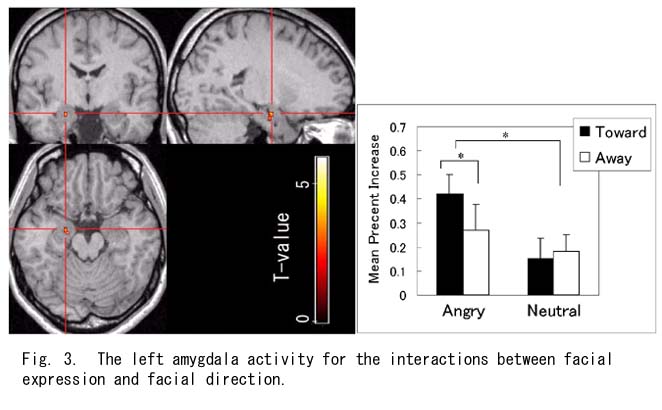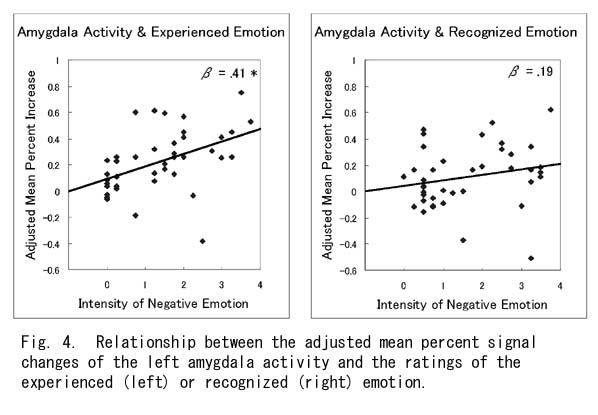SATO Wataru Laboratory
The amygdala processes the emotional significance of facial expressions: an fMRI investigation using the interaction between expression and face direction
(Sato, W., Yoshikawa, S., Kochiyama, T., & Matsumura, M.: NeuroImage)
Neuroimaging studies have shown activity in the amygdala in response to facial expressions of emotion, but the specific role of the amygdala remains unknown.
We hypothesized that the amygdala is involved in emotional but not basic sensory processing for facial expressions.
To test this hypothesis, we manipulated the face directions of emotional expressions in the unilateral visual fields (Fig. 1); this manipulation made it possible to alter the emotional significance of the facial expression for the observer without affecting the physical features of the expression. We presented angry/neutral expressions looking toward/away from the subject and depicted brain activity using fMRI.
After the image acquisitions, the subject's experience of negative emotion when perceiving each stimulus was also investigated.

The left amygdala showed the interaction between emotional expression and face direction, indicating higher activity for angry expressions looking toward the subjects than angry expressions looking away from them (Fig. 3).
The experienced emotion showed the corresponding interaction (Fig. 2).
Regression analysis showed a positive relation between the left amygdala activity and experienced emotion (Fig. 4).



These results suggest that the amygdala is involved in emotional but not visuoperceptual processing for emotional facial expressions, which specifically includes the decoding of emotional significance and elicitation of one' s own emotions corresponding to that significance.
Return to
Recent Research.
Return to
Main Menu.



